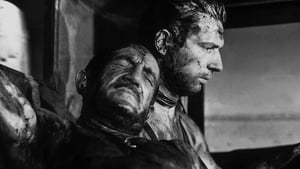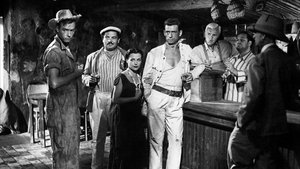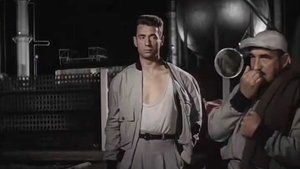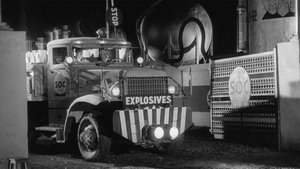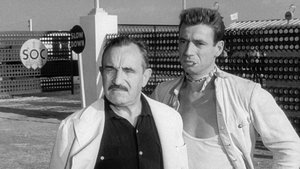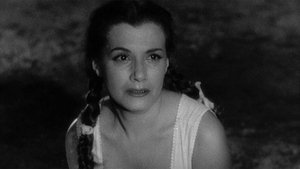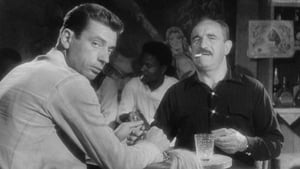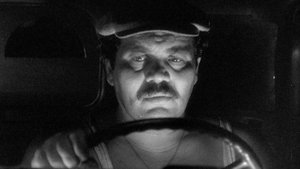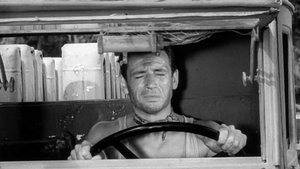Video Sources 0 Views
- Watch trailer
- The Wages of Fear 1953 Colorized

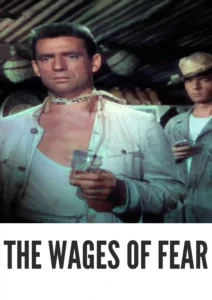
Synopsis
Table of Contents
Toggle
Delve into the heart-stopping world of The Wages of Fear, a gripping suspense thriller from 1953, now brilliantly colorized to amplify its raw intensity. Directed by Henri-Georges Clouzot, this film plunges viewers into a desperate mission involving nitroglycerin transport through treacherous terrain. Perfect for fans of intense, character-driven stories and those seeking a cinematic experience that will leave them breathless, this HD download offers a fresh perspective on a timeless classic. Also known as Le salaire de la peur.
The Wages of Fear unfolds in a squalid South American town, where four desperate men are offered a chance to escape their misery. An American oil company needs to extinguish a massive oil well fire, and the only way to do it is with nitroglycerin. The catch? The nitroglycerin must be transported over hundreds of miles of rough, mountainous roads in unstable trucks.
The men, Mario (Yves Montand), Jo (Charles Vanel), Luigi (Folco Lulli), and Bimba (Peter van Eyck), accept the perilous task, driven by the promise of a large sum of money. Each bump, each turn, each moment becomes a test of their courage and sanity. The film masterfully builds suspense as the men confront mechanical failures, psychological breakdowns, and the ever-present threat of explosion. The Wages of Fear is a harrowing exploration of human endurance and the lengths men will go to for a glimmer of hope.
The film features a powerful ensemble cast that fully embodies the desperation and grit of their characters:
-
Yves Montand as Mario
-
Charles Vanel as Jo
-
Folco Lulli as Luigi
-
Peter van Eyck as Bimba
The Wages of Fear firmly resides in the suspense thriller genre, with strong elements of adventure and drama. Its intense atmosphere, high-stakes premise, and focus on character psychology elevate it beyond a simple action film, making it a profound exploration of fear, greed, and the human spirit.
Released in 1953, The Wages of Fear reflects the anxieties and uncertainties of the post-war era. Its bleak setting and focus on desperate characters echo the existential themes prevalent in European cinema at the time. The film’s unflinching portrayal of human vulnerability and its critique of corporate greed resonated with audiences seeking more than just escapist entertainment. The Wages of Fear is a landmark film that continues to provoke thought and discussion about the human condition.
This colorized version of The Wages of Fear has been carefully restored using state-of-the-art digital technology, enhancing the visual impact while respecting the film’s original mood and atmosphere. The colorization process involved meticulous analysis of the original black and white footage, with colors chosen to complement the story’s setting and emotional tone. Advanced algorithms were employed to ensure accurate color representation and seamless integration, resulting in a visually stunning and immersive experience. This colorized version offers a new way to appreciate the film’s artistry and engage with its powerful narrative.
-
: Henri-Georges Clouzot
-
: Henri-Georges Clouzot, Georges Arnaud (novel)
-
: Armand Thirard
-
: Henri-Georges Clouzot
-
: CICC Films
-
: Filmsonor (France)
-
: 131 minutes
-
: MP4
-
: HD (1080p)
-
: Compatible with a wide range of devices, including smartphones, tablets, computers, and smart TVs.
The Wages of Fear (1953) is widely regarded as a masterpiece of suspense cinema, praised for its masterful direction, compelling performances, and unflinching realism. Its influence can be seen in countless thrillers that followed, and it remains a benchmark for tension and atmosphere. A gripping and thought-provoking film, The Wages of Fear is an essential viewing experience for any serious film enthusiast.
-
: What is The Wages of Fear about?
-
A: The Wages of Fear is about four desperate men who are hired to transport nitroglycerin across dangerous terrain.
-
-
: Why is The Wages of Fear considered a classic?
-
A: The Wages of Fear is considered a classic for its masterful suspense, compelling characters, and thought-provoking themes.
-
-
: Is this version of The Wages of Fear colorized?
-
A: Yes, this version has been professionally colorized to enhance the viewing experience.
-
-
: What makes The Wages of Fear so intense?
-
A: The Wages of Fear is intense due to its high-stakes premise, realistic portrayal of danger, and focus on the psychological impact of fear.
-
-
: What is the download format?
-
A: The download format is MP4, ensuring compatibility with most devices.
-
-
: What resolution is the download?
-
A: The resolution is HD (1080p), providing a high-quality viewing experience.
-
Experience The Wages of Fear Today!
